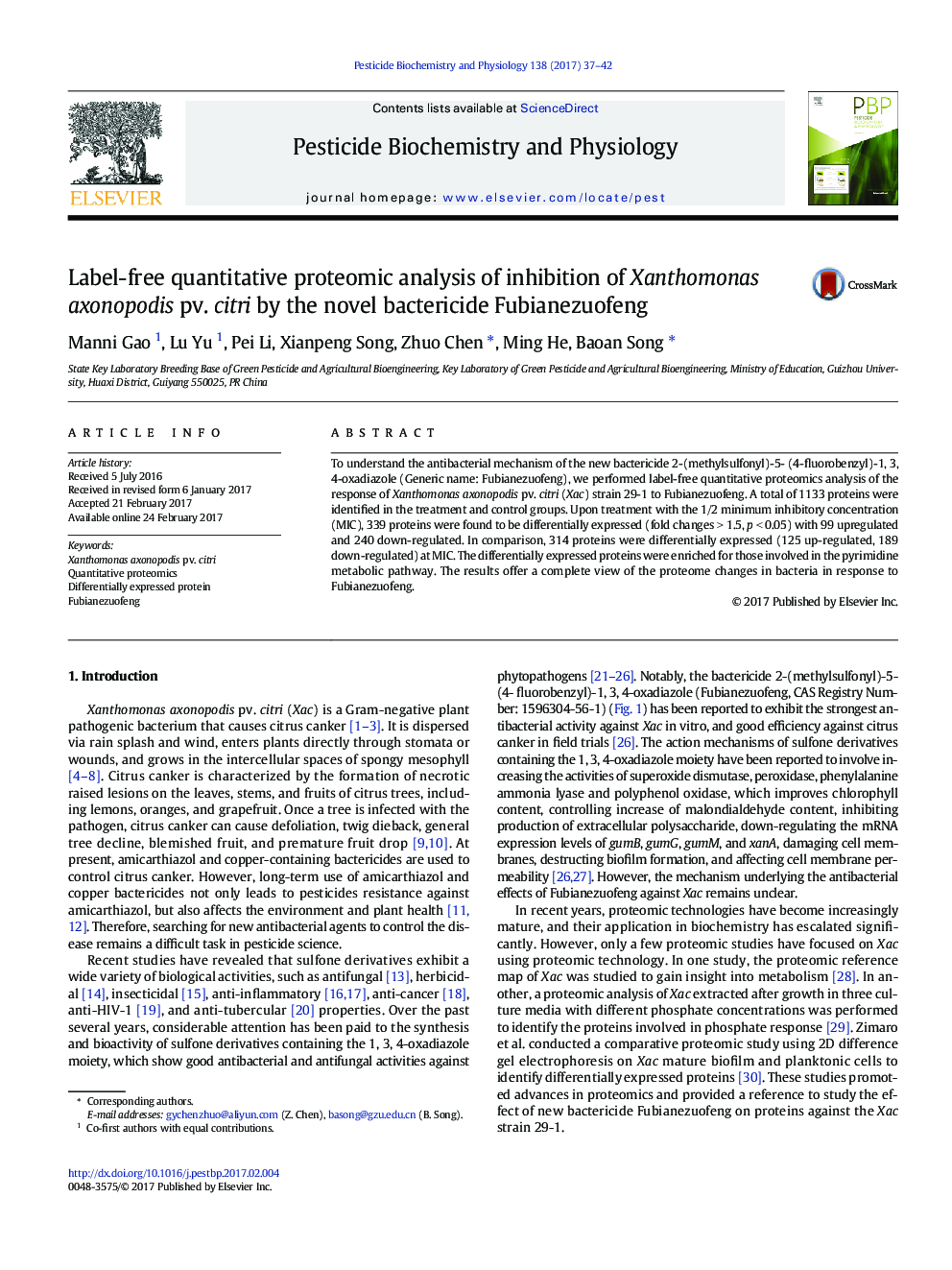| Article ID | Journal | Published Year | Pages | File Type |
|---|---|---|---|---|
| 5514856 | Pesticide Biochemistry and Physiology | 2017 | 6 Pages |
â¢A comparative proteomic analysis was conducted in this study.â¢339 and 314 proteins regulated by Fubianezuofeng with 1/2 and 1 of MIC, respectivelyâ¢Pyrimidine metabolism was a main pathway regulated by Fubianezuofeng.
To understand the antibacterial mechanism of the new bactericide 2-(methylsulfonyl)-5- (4-fluorobenzyl)-1, 3, 4-oxadiazole (Generic name: Fubianezuofeng), we performed label-free quantitative proteomics analysis of the response of Xanthomonas axonopodis pv. citri (Xac) strain 29-1 to Fubianezuofeng. A total of 1133 proteins were identified in the treatment and control groups. Upon treatment with the 1/2 minimum inhibitory concentration (MIC), 339 proteins were found to be differentially expressed (fold changes > 1.5, p < 0.05) with 99 upregulated and 240 down-regulated. In comparison, 314 proteins were differentially expressed (125 up-regulated, 189 down-regulated) at MIC. The differentially expressed proteins were enriched for those involved in the pyrimidine metabolic pathway. The results offer a complete view of the proteome changes in bacteria in response to Fubianezuofeng.
Graphical abstractIn this paper, label-free quantitative proteomics coupled with bioinformatics was used to analyze the mechanism underlying the response of Xac strain 29-1 to Fubianezuofeng, a novel bactericide. Pyrimidine metabolism was the most strongly enriched pathway among the proteins differentially expressed between treatment groups. The results offer a more complete view of the proteome changes in bacteria in response to Fubianezuofeng.Download high-res image (93KB)Download full-size image
